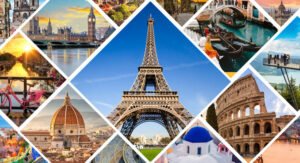
World’s biggest election underway in India.
Soon after polling began, a large number of voters began queuing up outside a polling booth in the West Garo Hills district in the north-eastern state of Meghalaya.
India has 18 million first-time voters who are between the ages of 18-19, with another 197.4m in the 20-29 age group. Surveys show unemployment is among the top concern for India’s youth.
More than 51% of the voters, or 497 million, are men. The number of female voters, which has consistently grown over the years, is only slightly lower at 471 million.
It’s hard to distil elections in a country as large as India to just a few faces – political choices can vary widely from region to region. But still, here’s a brief guide to the key names:
Narendra Modi: The Indian PM is the face of the government and his Bharatiya Janata Party. He’s aiming for a third straight term in power.
Rahul Gandhi: Member of the opposition Congress party, which was once the dominant political force in India. He belongs to India’s most illustrious political family but hasn’t yet won a national election for his party.
Arvind Kejriwal: Delhi’s popular chief minister and leader of the opposition Aam Aadmi Party (AAP) is in jail on corruption charges that he says are made up. The former bureaucrat is a fiery opponent but his supporters fear his imprisonment will hamper the AAP’s campaign.
Amit Shah: India’s home minister, who is also Mr Modi’s closest confidant, is known as an efficient political strategist.
Mamata Banerjee and MK Stalin: The chief ministers of West Bengal and Tamil Nadu states, respectively, are powerful opposition leaders. Neither is standing for the election but their states – with 42 and 39 seats, respectively – are expected to see interesting contests.
Among the many other names you can expect to hear are BJP leader Yogi Adityanath (chief minister of India’s most populous state Uttar Pradesh) and opposition leaders Sharad Pawar, Uddhav Thackeray and Akhilesh Yadav.
When the world’s most populous country goes to polls, the numbers are bound to be huge. There are nearly 969 million eligible voters. To give you an idea of how large that number is, let’s add together the entire populations of some major countries:
Nearly 1.5 million polling booths with 5.5 million electronic voting machines have been set up to cover the length and breadth of the country. The Election Commission has deployed 15 million polling and security staff and trains and 400,000 vehicles will be used to ferry them.
India’s parliament is made up of the Lok Sabha (lower house) and the Rajya Sabha (upper house). The election beginning today is to vote for MPs for the Lok Sabha.
All citizens living in India who are 18 years or older can register to vote (except for those who are barred on grounds of “unsoundness of mind” or criminality). A party or coalition needs to win 272 seats in the 543-member house to form the government.
Prime Minister Narendra Modi, whose Bharatiya Janata Party(BJP) won 303 seats in the last election, is seeking a third consecutive term in power.
He’s being challenged by an opposition alliance – called the Indian National Developmental Inclusive Alliance or INDIA – formed by more than two dozen parties, including the Congress which was the dominant party for the first 60 years of the country’s existence until the resurgence of the BJP in 2014.




Leave A Comment